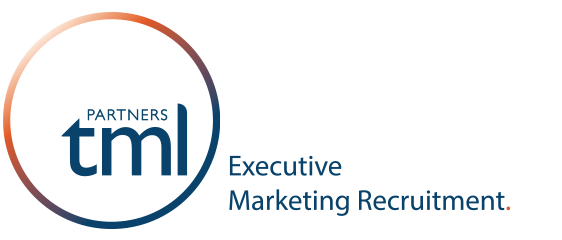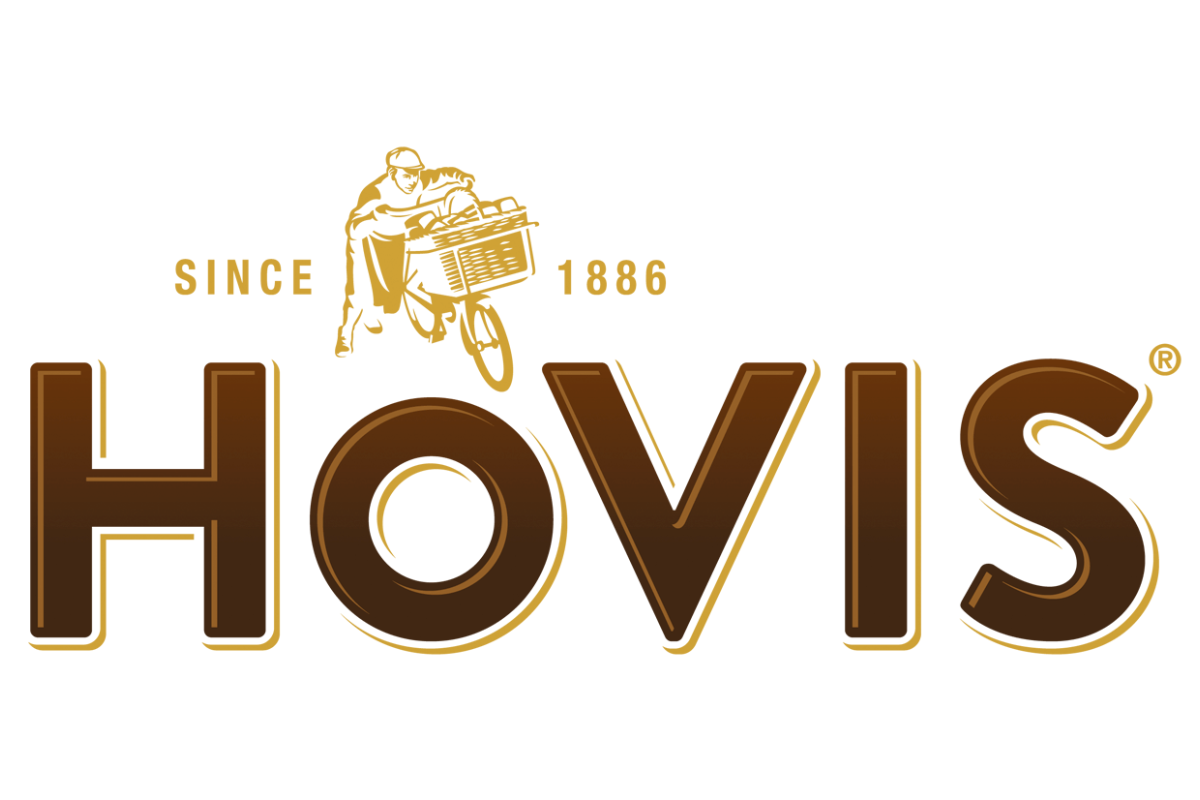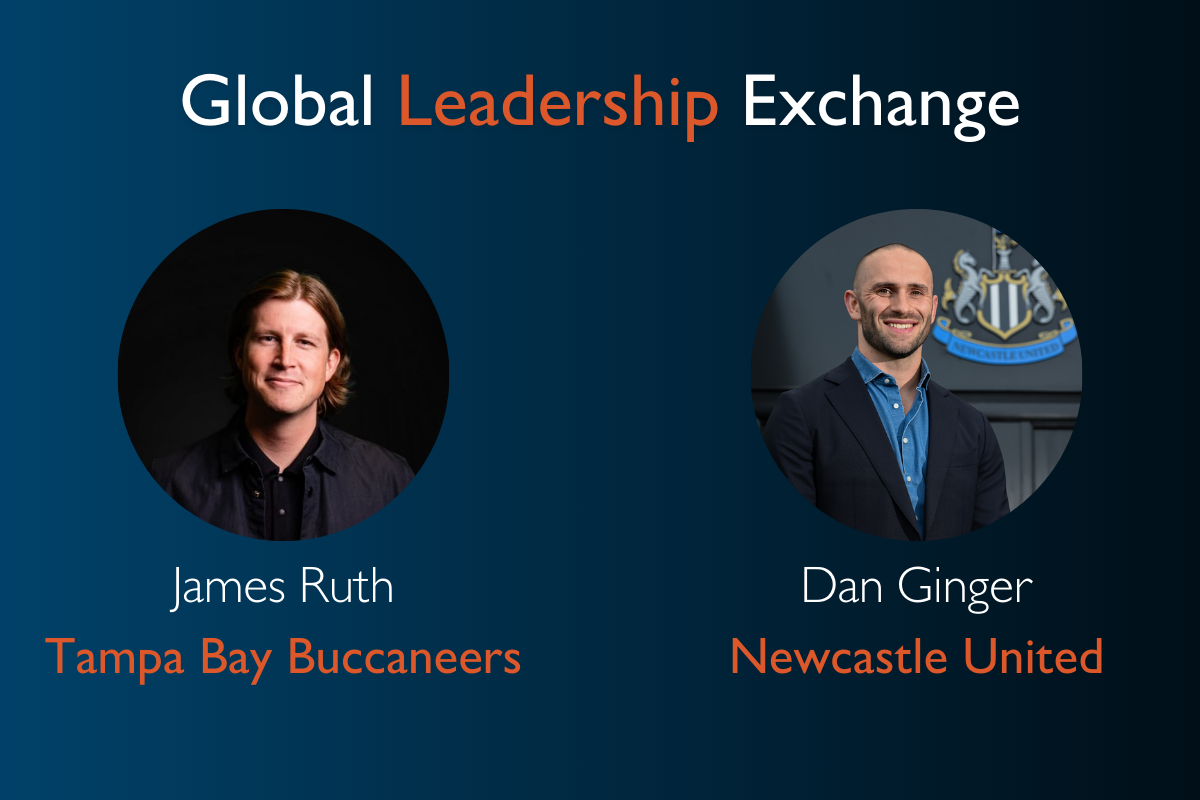We recently hosted a virtual roundtable with our corporate affairs marketing network where we discussed how the traditional approach to corporate affairs is changing to better engage audiences through content-first strategies.
Tom Morgan-Harris, Associate Director at tml Partners and head of our Corporate Affairs practice, chaired the session. We had two guest speakers, Barry Neville, Global Head of External Communications at Standard Chartered Bank and Richard Taylor, Group Director of Corporate Affairs at The Post Office. We were joined by a high-profile group of communications and corporate affairs leaders;
- Paula Murphy, Chief Communications and Marketing Officer at Wood plc
- Jo Ouvry, Partner and Head of Corporate Affairs at Deloitte
- Lewis Woodward, Global Head of Brand and Communications at JLL
- Finola McDonnell, Chief Marketing and Communications Officer at FT
- Fiona Laffan, Global Head of Corporate Affairs at ICG
- Jonathan Bunn, Head of Communications at MetLife
The lively discussion centred around three main themes: how to structure corporate affairs teams in order to develop a successful content strategy, the challenges of managing content in the online world and how to overcome these challenges.
Structuring corporate affairs teams for a successful content strategy
How do we make sure enough content is produced, that it reaches the right people and that it’s managed appropriately internally?
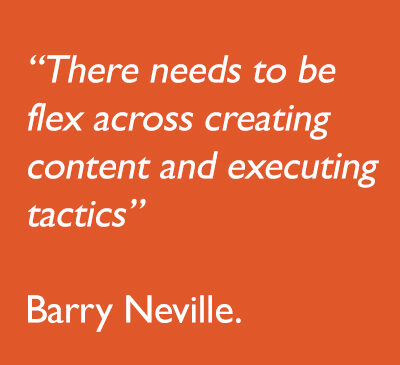 The group widely agreed that content needed to be produced in-house. Outsourcing to freelancers might solve some initial resourcing issues but in order to convey a consistent message and represent the business, in-house copywriters are the best solution. Then it is about making sure that the team is structured so that responsibilities are clearly defined. Our understanding having helped clients successfully build these teams, is that it’s important to have clearly defined roles and the right balance of skills. Part of the corporate affairs team needs to focus on producing the content in line with key messages, then another part of the team can concentrate on the tactical side of reaching the right audiences – the all-important channel management. There has to be some flexibility in this, however. It’s rare that individuals would see themselves as solely content production or channel management but having accountability for one part, yet still considering the other leads to a truly agile team. “There needs to be flex across creating content and executing tactics” says Barry Neville.
The group widely agreed that content needed to be produced in-house. Outsourcing to freelancers might solve some initial resourcing issues but in order to convey a consistent message and represent the business, in-house copywriters are the best solution. Then it is about making sure that the team is structured so that responsibilities are clearly defined. Our understanding having helped clients successfully build these teams, is that it’s important to have clearly defined roles and the right balance of skills. Part of the corporate affairs team needs to focus on producing the content in line with key messages, then another part of the team can concentrate on the tactical side of reaching the right audiences – the all-important channel management. There has to be some flexibility in this, however. It’s rare that individuals would see themselves as solely content production or channel management but having accountability for one part, yet still considering the other leads to a truly agile team. “There needs to be flex across creating content and executing tactics” says Barry Neville.
Sitting above the content production and channel management is how and when to introduce campaign management. Pieces of content naturally vary in terms of investment needed in the production and the potential return on that investment. There has to be some criteria that escalates a piece of content from standard release down the appropriate channels to a full campaign in itself. Budget and market relevance are the measures here. If a piece of content costs above a certain figure to produce and is relevant to say, three or more markets, it should be treated as a campaign in its own right.
Challenges of managing content in the digital world
The discussion then turned to the challenges of managing content in the online world. The last year has drastically increased digital activity, meaning the challenges that were already facing businesses online are only amplified. Going back a long way, it was relatively easy to identify your stakeholders as a business. It was easier to control who a business reached and what they said to them. Stakeholder mapping is now incredibly complex. Social media means any content can be broadcast or reviewed by anyone, which means it’s a real challenge to target content to a specific audience. You can reach that audience, certainly, but you’ll also reach a whole set of other people who you haven’t tailored a piece for and therefore you are vulnerable to opinions that could be damaging to your brand.
Additionally, it’s not possible for content to remain local. The digital world is a global platform and therefore not only can your content be irrelevant to people it reaches, it could be culturally inappropriate as well.
Controlling the narrative
These challenges present a real minefield for corporate affairs teams, but the third theme the group discussed was how to deal with this, how to control the narrative as much as possible. There’s no silver bullet, but there were some strategies discussed that at least brought some control back.
 “Where there is a thematic, that is the sweet spot” says Richard Taylor. Having key thematics is a way to get large and perhaps disparate teams to concentrate on consistency in their content. This is a core set of themes that the business writes on – these could (and should) change over time, keeping content fresh and timely, but in general it’s about trying to get consistency in different markets but also allowing the freedom to make content relevant for the audience you’re reaching. “Have something that starts the conversation and leads you in the right direction”, says Barry Neville.
“Where there is a thematic, that is the sweet spot” says Richard Taylor. Having key thematics is a way to get large and perhaps disparate teams to concentrate on consistency in their content. This is a core set of themes that the business writes on – these could (and should) change over time, keeping content fresh and timely, but in general it’s about trying to get consistency in different markets but also allowing the freedom to make content relevant for the audience you’re reaching. “Have something that starts the conversation and leads you in the right direction”, says Barry Neville.
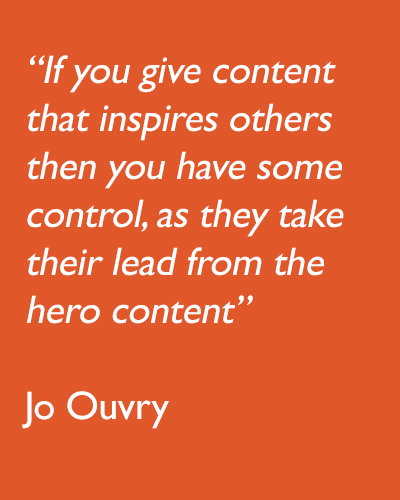 Another solution is the idea of ‘hero content’. This is content which has been heavily invested in and promoted and sets a benchmark for other content. This is a lead-by-example strategy and hopes that if a business shows the gold-standard of content it will filter down in some way to all other content that is produced. “If you give content that inspires others then you have some control, as they take their lead from the hero content” says Jo Ouvry. This could be a good way in which to demonstrate tone of voice for an organisation and perhaps also of introducing key themes across a business that teams can build on with additional content.
Another solution is the idea of ‘hero content’. This is content which has been heavily invested in and promoted and sets a benchmark for other content. This is a lead-by-example strategy and hopes that if a business shows the gold-standard of content it will filter down in some way to all other content that is produced. “If you give content that inspires others then you have some control, as they take their lead from the hero content” says Jo Ouvry. This could be a good way in which to demonstrate tone of voice for an organisation and perhaps also of introducing key themes across a business that teams can build on with additional content.
Keeping it simple was the final strategy for controlling the narrative. A business with a very short and clear message, one that is supported from the top down, can control the output by asking ‘does this content match our message?’. There are specific challenges here with how that message for content links into the purpose of the business, but the aim in terms of content is giving a tool that starts a conversation to lead content in the right direction.
These three tactics all aim to achieve consistency in content across an organisation, making each piece as representative as possible of the brand. If this is achieved, while not removing them all together, the challenges mentioned above of releasing content externally are reduced.
The overarching takeaway from this session was that content has always been front and centre, but it’s now so embedded in business success that corporate affairs leaders are building strategies that directly affect the bottom line. It’s a challenging activity to control, but with centralised thinking and support from the board, there are huge potential rewards from putting content first.
tml Partners is an international executive marketing and corporate affairs recruitment firm specialising in board level appointments across marketing, business development and corporate communications. Tom Morgan-Harris is currently partnering with high growth clients to support the best in class development of the corporate affairs functions across the globe. If you’d be interested in hearing about future roundtable events please don’t hesitate to contact us: tom.morgan-harris@tmlpartners.com
